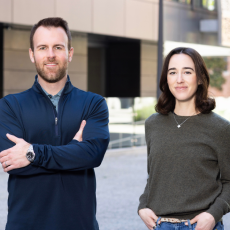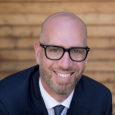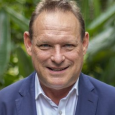Can you introduce your thesis as a VC and explain how it has evolved over time?
KD: The fundamental mission of Selva Ventures is to invest in brands that help consumers live healthier lives. This primarily focuses on consumable products that offer better ingredients, function, and emotional connection with their consumers. We regard healthy living as an enduring megatrend and a vital component of the consumer economy. Our objective is to simplify the understanding and accessibility of healthy living, and allow it to become a habit for more people. Since our inception in 2019, we have been striving to assist businesses in impacting consumers positively at the early stages of their journey by providing them with not just capital but also resources that can grant them a competitive edge.
We focus our efforts on companies at the seed and series A stages, generally before they reach $10 million in sales. We hope to facilitate the growth of these startups into businesses that can impact consumers' lives at scale, thus contributing to a healthier society.
What is the one key thing you look for when investing in a startup?
KD: Our biggest question is whether a product effectively solves a problem that matters to the consumer. The best consumer products pass what we call the "dinner party test" – impacting a consumer enough that they will bring it up and recommend it to friends at a dinner party. Essentially, we are interested in products that spark organic growth and word-of-mouth endorsements, arising from the genuine improvement of a consumer’s life.
Could you provide a case example of a high referral coefficient product from your portfolio?
MK: One remarkable example would be OneSkin, a company operating in the longevity space, beginning with skincare. The intriguing part was observing organic mentions of the product in the longevity community by notable figures such as David Sinclair, spurred not by promotions but genuine interest and research. The endorsements extended from experts to everyday conversations among friends and family, where people shared their positive experiences after using the product for a couple of months.
This blend of expert validation and personal testimonials stood as testimony to the product’s efficacy, showcasing how it was helping people lead healthier lives. It exemplified the kind of organic growth we look for, a product that not only works but has managed to create a buzz based on its genuine impact on people’s lives.
What trends are you observing currently that you believe will attain mass adoption in 5 to 10 year time horizon?
MK: We observe a rising emphasis on product efficacy, with consumers gravitating towards brands that offer proven results alongside safety. The trend has evolved from just seeking “clean” products to desiring products developed based on deep scientific understanding and offering tangible benefits. This trend sees the converging paths of biotechnology and beauty, where products are founded on profound scientific research and bring forth innovative solutions to the market.
A subset of this trend is the pro-aging movement, which is about embracing the aging process while taking empowered steps in one's aging journey, underlined by a better understanding of our bodies and how to care for them.

Another noteworthy trend is the shift towards prevention, with a focus on daily care routines incorporating products that work well with others and promoting preventive measures, like daily sunscreen application as a norm for anti-aging or pro-aging, rather than just a seasonal practice.
It is a comprehensive approach to wellness that foresees potential issues and tackles them before they become a problem.
With the emergence of products rooted in deep science and clinical backing, how do you guide your companies in marrying this with effective distribution?
KD: Balancing the complexity of product development with efficient storytelling is key for a brand to resonate. We encourage brands to leverage digital platforms initially, sharing detailed content on their websites and mailing lists rather than just flashy ads, to educate consumers on why they should try their product. Brick-and-mortar presence does play a substantial role, but we recommend being selective in choosing distribution points and timing to ensure the brand retains control over how its story is conveyed to its early consumers.
We also urge brands to explore unconventional distribution channels where they could introduce beauty or wellness products. Many of the best brands think outside the box here, identifying spaces where they can establish a presence, distinguishing themselves from others, and effectively reaching potential consumers with a message grounded proven efficacy.
How do you perceive market trends evolving in the next three to five years?
KD: One clear emerging trend is the consumer's heightened expectation for evidence of efficacy before trying a product. Consumers more than ever are expecting credible proof that a product will work before making an initial purchase. Recently, Madeline and I were walking through a Sephora in Los Angeles and noticed banners on the wall citing clinical trials of several new brands – this is something we would not have seen even three years ago. This consumer inclination towards clinical efficacy is going to raise the bar on product quality across the beauty industry.
MK: Consumers have become sophisticated in understanding various types of testing. Early adopters delve deep into differentiating perception studies from clinical trials. This awareness about the rigorous work behind product efficacy is becoming widespread.
What are the current M&A trends in the beauty industry?
KD: It used to be that buyers worried less about profitability prior to acquisition as they could create efficiency in a brand that had amassed enough scale. Now, the emphasis is on efficiency as a key signal of quality to be worthy of acquisition. This perspective has shifted the market’s focus from growth to efficient growth. The new important metrics are gross margin, repeat purchase, and return on invested capital rather than simple revenue growth rate and ROAS (return on ad spend). This new mode of evaluation has moved upstream as well, as venture capitalists are starting to evaluate businesses more in line with their private equity peers.
Do you foresee any changes in the commercial landscape due to this investment approach?
KD: We believe in a venture capital model for consumer products that aims for exits under $500 million, not relying on high-risk "moonshots." This allows early support for brands and gives major companies the opportunity to acquire between $100 million and $500 million. This collaboration benefits the entire ecosystem.
How significant are emerging technologies like generative AI and XR for startups?
KD: While new technologies bring exciting potential, the industry should be cautious about over-hyping anything so nascent. Direct-to-consumer models were once seen as revolutionary, but they didn't completely transform the industry they way many expected or hoped. If generative AI can significantly improve the consumer journey or brings meaningful operating efficiency then there will be great value creation, but until that is more proven out we should be wary of technologies without clear applications.
What challenges do you predict for the industry and for VCs?
KD: The rising cost of online customer acquisition is a major challenge. Additionally, major companies like Estee Lauder and Procter & Gamble must successfully integrate their acquired brands to grow organically and encourage further acquisitions. This includes product portfolio expansion and retaining acquired talent.
How do you approach startups that delay seeking strategic investors due to incoming revenue?
KD: Our goal is to offer more than just capital. We aim to provide strategic insight, connections, and guidance to help them navigate future challenges. We are a service business – we strive to improve the odds of success for any company that we partner with – so we often partner with companies who are looking for our help even if the need for our capital can wait.






